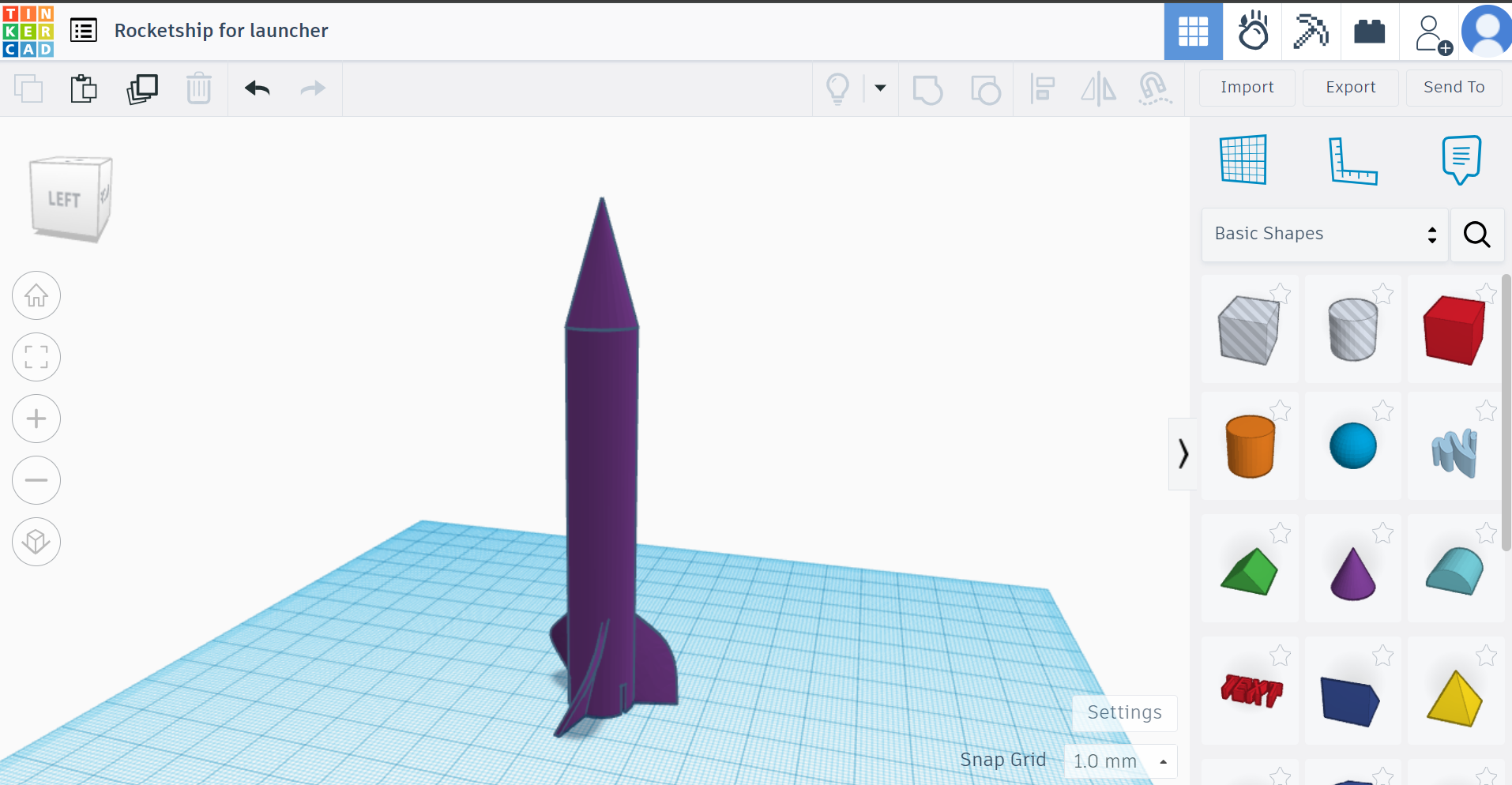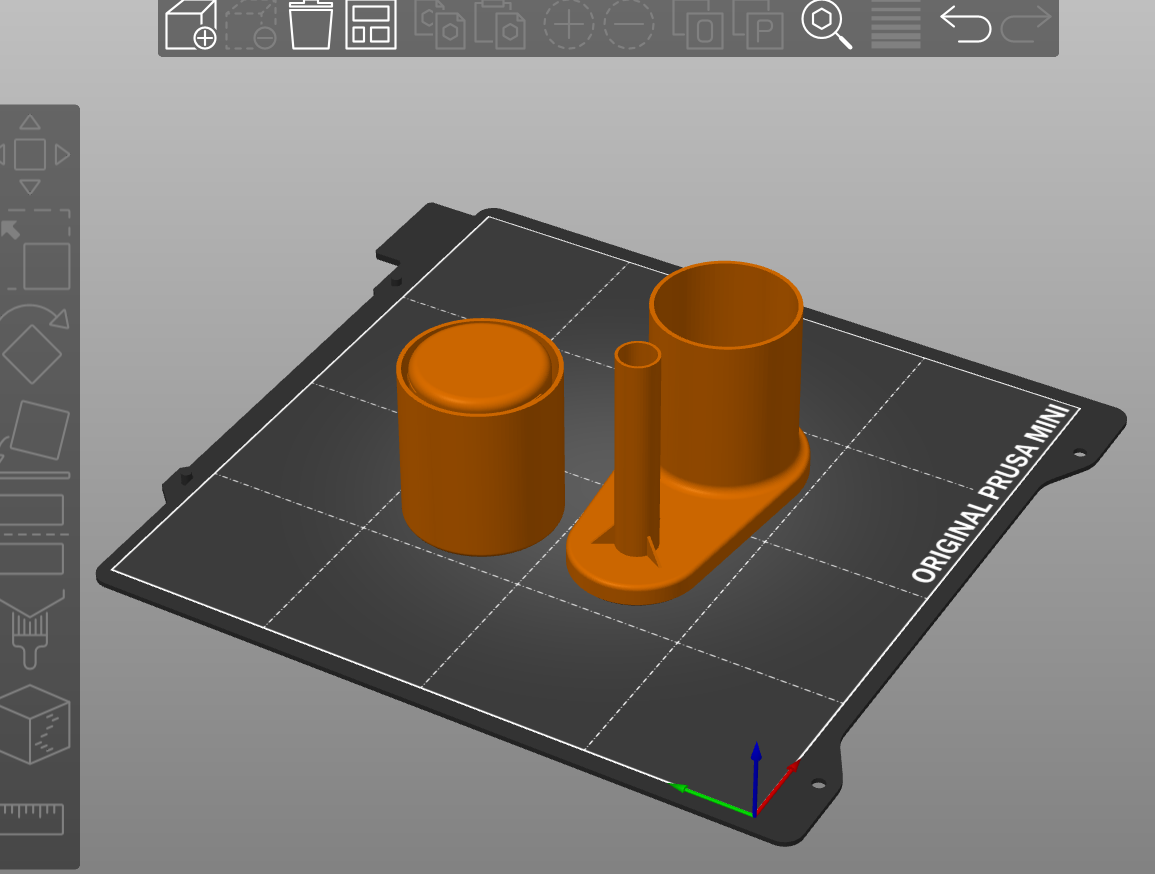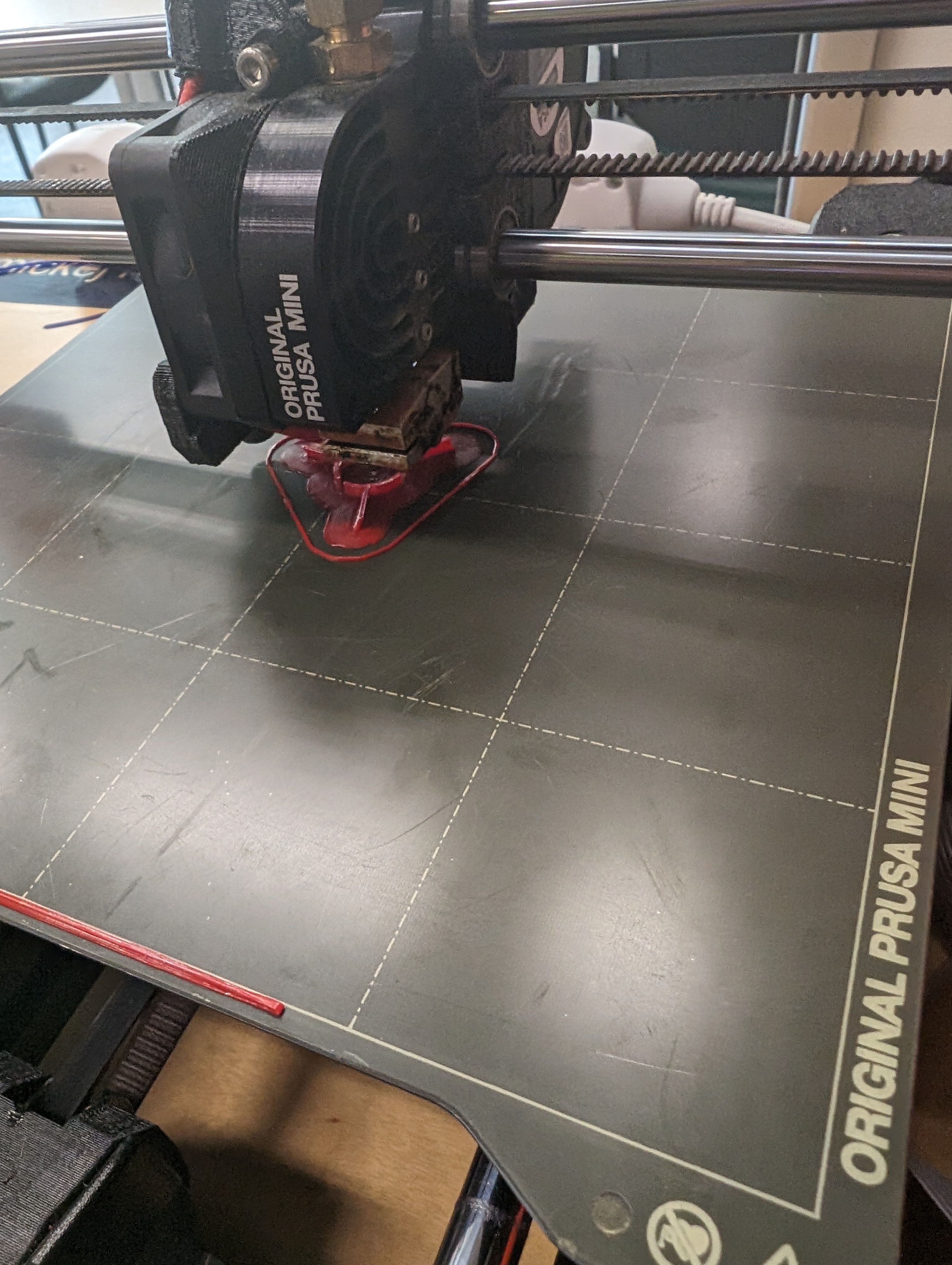Difference between revisions of "Projekty-2024/rocketship"
| Line 20: | Line 20: | ||
Brimming an object - useful for tall and thin models, like the rocket. It provides a temporary base to stabilize the model during printing. | Brimming an object - useful for tall and thin models, like the rocket. It provides a temporary base to stabilize the model during printing. | ||
| − | Infill - used to provide an interior scaffolding for the model, | + | Infill - used to provide an interior scaffolding for the model, it provides support for solid objects without wasting material and while maximising strength. The style of the infill can also be changed in the printer settings. |
| + | |||
| + | |||
| + | Once all of the settings are in order, the next step is to actually slice the model. This can be shown in the below screenshot. | ||
| + | |||
| + | [[File:sliced.png]] | ||
| + | |||
| + | This displays factors like print time, printer nozzle size, filament type and printer model. The next step is to export the g-code onto a USB stick and plug it into the printer. | ||
| + | |||
| + | The 3D printer that I used was a Prusa Mini. These printers are very accurate and quick, making it an ideal choice for the prototypes that I wanted to make. Below is a picture of the printing in progress. | ||
| + | |||
| + | [[File:printing.jpeg]] | ||
| + | |||
| + | Once the printing has finished, the brim needs removing from the | ||
Revision as of 15:04, 22 May 2024
What ?
This project is a 3d printed rocket ship, complete with launch pad and compressed air launch module. The aim of this project is to create something fun, that can teach children about the physics behind air compression and force in a fun way.
Why ?
I chose this project because I wanted to improve my CAD/CAM skills, as well as learn new skills in 3D component design, construction and an iterative design process required to produce functioning products. I used an agile way of developing this project.
How ?
For this project, I used 3d modelling software in order to create a visual design. At first, I used Tinkercad. This was a very useful tool, because it helped me to visualise and look at the model in an easier, more visual way. I had to then use a more precise 3D modelling software, because Tinkercad is only best for visualisation. In the end, I chose to use openSCAD. This was a difficult software to learn, however I liked how it was similar to coding. This was beneficial because it enabled me to make more precise models that are more appropriate for accurate printing and modelling.

I had 3 main components of this project - The rockets, the launcher and the air pressure pump. These were all modelled using openSCAD.
Once the models had been created, the next step was to slice the models. Slicing primes the 3D designs, and enables them to be converted into a language that the 3D printers understand.

Inside the slicer, there are many different options that you can change. Some of these include:
Brimming an object - useful for tall and thin models, like the rocket. It provides a temporary base to stabilize the model during printing.
Infill - used to provide an interior scaffolding for the model, it provides support for solid objects without wasting material and while maximising strength. The style of the infill can also be changed in the printer settings.
Once all of the settings are in order, the next step is to actually slice the model. This can be shown in the below screenshot.
This displays factors like print time, printer nozzle size, filament type and printer model. The next step is to export the g-code onto a USB stick and plug it into the printer.
The 3D printer that I used was a Prusa Mini. These printers are very accurate and quick, making it an ideal choice for the prototypes that I wanted to make. Below is a picture of the printing in progress.
Once the printing has finished, the brim needs removing from the
Create a sub-page of your project on this page
describe the process of turning an attack into a material (functional) product specify the necessary material (we prefer our own or existing components, we can help if necessary) the output will be a materialized attack and also a guide - step by step to the reproduction of the product Instructions and technological procedures for Fablab devices will also be a common performance

